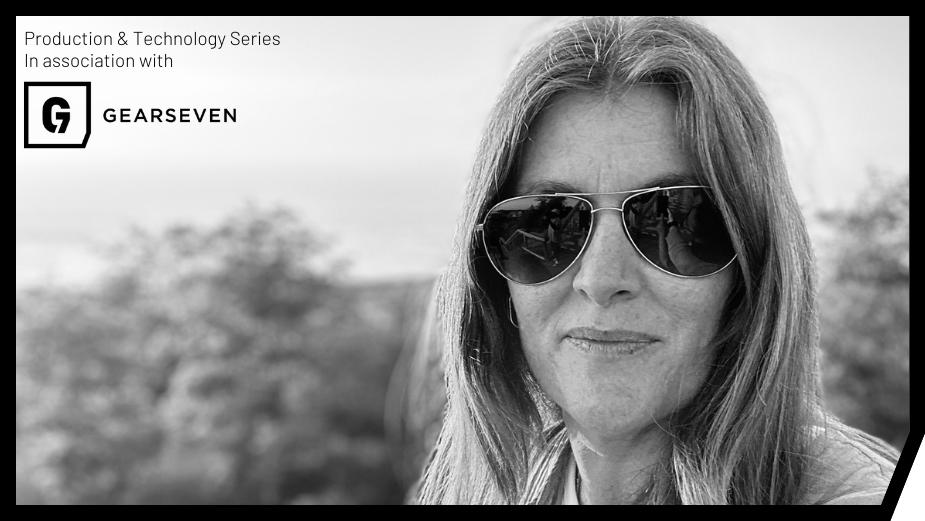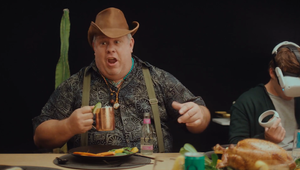
Quality Meats’ Autumn Childress on Her Continuous Fascination with Production Technology

Nashville-based production company Gear Seven pushes the limits of creativity, technology and possibility - and innovates like it’s nobody's business. Alongside a non-exclusive roster of directors and production capabilities, Gear Seven offers hardware, LED volume studios and virtual production via its sister companies Shift Dynamics and Arc Studios Gear Seven has teamed up with LBB to speak with agency production leaders about innovations in production technology and how it’s revolutionising commercial production.
This series investigates the importance of education in this area for agencies and brands and offers a fun opportunity to nerd out on all things technical, while sharing memories of their most awe-inspiring and unforgettable moments on set.
The latest interview is with Autumn Childress, executive producer at Chicago-based creative agency, Quality Meats. Passionate about creative excellence, her extensive background in broadcast, online, social and print productions includes eight years producing at Dailey, during her two stints there, and a six-year tenure at Deutsch LA.
Speaking to LBB’s Ben Conway, Autumn discusses how AI is already changing each phase of production, being in awe of “small and mighty” drones, and how she produced a 360-degree virtual reality experience for Honda
LBB> Throughout your career – what was the most exciting or ground-breaking piece of ‘new’ kit or technology that was introduced to you and why?
Autumn> This is a widely debated answer amongst filmmakers but, in my opinion as a producer, digital cinematography has revolutionised filmmaking. The benefit is mostly economical, but it has also allowed more flexibility and convenience. It’s easier to run multiple cameras, shoot multiple takes and angles, and not worry so much about getting the shot because you can now roll on the rehearsals. The technology has allowed more to be done in less time and elevated the production quality and streamlined the post.
LBB> And what are the technologies that you have your eye on now that either are having a big impact on how production is done - or have the potential to change things in a big way?
Autumn> AI for sure. It is currently disrupting and transforming our lives and the industry in a big way. It is vast in its reach and is changing each phase of production from analysing scripts and streamlining pre-production to intelligent video editing and real-time VFX and CGI integration. I’ve seen clients use ChatGPT to write a brief, creatives use it to pitch ideas, and it’s widely used to personalise audience engagement and marketing - just look at your Netflix ‘For You’ section, or the ads served up online.
LBB> What piece of kit (big or small and mighty) still makes you feel in awe when on set?
Autumn> Drones - hands down. Small and mighty in every sense. They have allowed for previously unattainable creative freedom and high production value at an affordable cost. They can capture shots from angles and perspectives that were formerly impossible. The Minnesota bowling alley drone video ‘Right Up Our Alley’, operated by Jay Christensen, was a remarkable cinematic achievement. His precision and skill in operating high velocity shots in such a tight space - and in a single take no less - was one of the most incredible things I have ever seen.
LBB> Can you talk us through one or two of the most exciting recent productions that you’ve been involved in that you think had a really interesting innovation or technological aspect to them?
Autumn> [During the pandemic] drop shipping camera equipment to people in their homes and operating, supervising and directing remotely from a laptop or iPad with QTake over Zoom, and then virtually supervising all stages of the post production process while sheltering in place at home away from my team was pretty ground-breaking… and at times super stressful.
Prior to the pandemic, I produced a full 360-degree virtual reality experience to help announce the product launch of the Honda Talon. Before the Talon was officially announced, Honda used virtual reality to give dealers a ride in the all-new machine. VR goggles and theatre-grade motion chairs put you in the passenger seat next to pro motocross rider Ken Roczen as he raced across the Johnson Valley off-road park. After launch, this VR experience (motion chairs included) was unveiled at the LA Auto Show and toured consumer auto shows across the country to give more people the chance to take a ride before the Talon reached dealerships.
LBB> A similar question but it doesn’t have to be recent - what is the time in your career that you’ve been on set or observing a production and been particularly in awe of what the production team was pulling off?
Autumn> I am still awed by the creativity and teamwork that goes into each production. Each set is still uniquely impressive. I am continually fascinated by the technology that enables us to manipulate the camera and how the footage is captured whether it is an arm car, high speed camera robot or a drone.
LBB> Virtual production is growing in popularity in film and TV, what are your thoughts about its potential in the advertising space?
Autumn> Emerging virtual production technology is exciting! I think it will allow things that may have been out of reach due to budget constraints, but it is not for every job. It allows for more control and is great for backgrounds from what I have seen, but can also be pretty limiting having to lock everything during pre-production. We all know how many changes clients ask for during post and it is not like green screen, which affords you the ability to change it. I am excited to see where it goes and if the integration becomes more seamless. It still feels a bit fake when an actor needs to engage with it and it is difficult to fake a car driving through terrain.
LBB> It can involve quite a different workflow/process - is that something you feel agencies and brands need to educate themselves on or does it lie with the production company? Why?
Autumn> Agency producers need to be educated on virtual production so they can sell it to their creatives and clients, and educate them on the process. The production company obviously needs to know how to pull it off, too, but I don’t think it is imperative for brands to necessarily know the ins and outs. It would make my job easier if they were more production-savvy, but they already have full-time jobs and things tend to run smoother when everyone stays in their own lanes.
LBB> With so many platforms to produce for, what’s your preference: to maximise assets across platforms or to produce content that’s more tailored to each content? Perhaps some sort of balance? What sort of conversations do you tend to have about this sort of thing?
Autumn> I think all creative personalities would prefer to have their work tailored to each platform, but most of the time that is cost/time prohibitive. Ideally, we could find a balance, but TVs and phones are not viewed in the same format so I don’t think it will ever be one-size-fits-all. The conversations are ongoing and tailored to the project. For example, a production may have several units working within the same location - still photography, social/web/BTS and the main unit. Another project may split those out and dedicate a shoot day(s) for each. It ultimately depends on the budget and schedule and the creative/deliverables.
LBB> Quite often production involves trying to solve a problem that’s never been attempted before - and that can mean hacking existing technology or trying to find new technologies. When you get a project that has such technological challenges, how do you and your team like to approach them?
Autumn> Research and partner with the best people for the job!
















